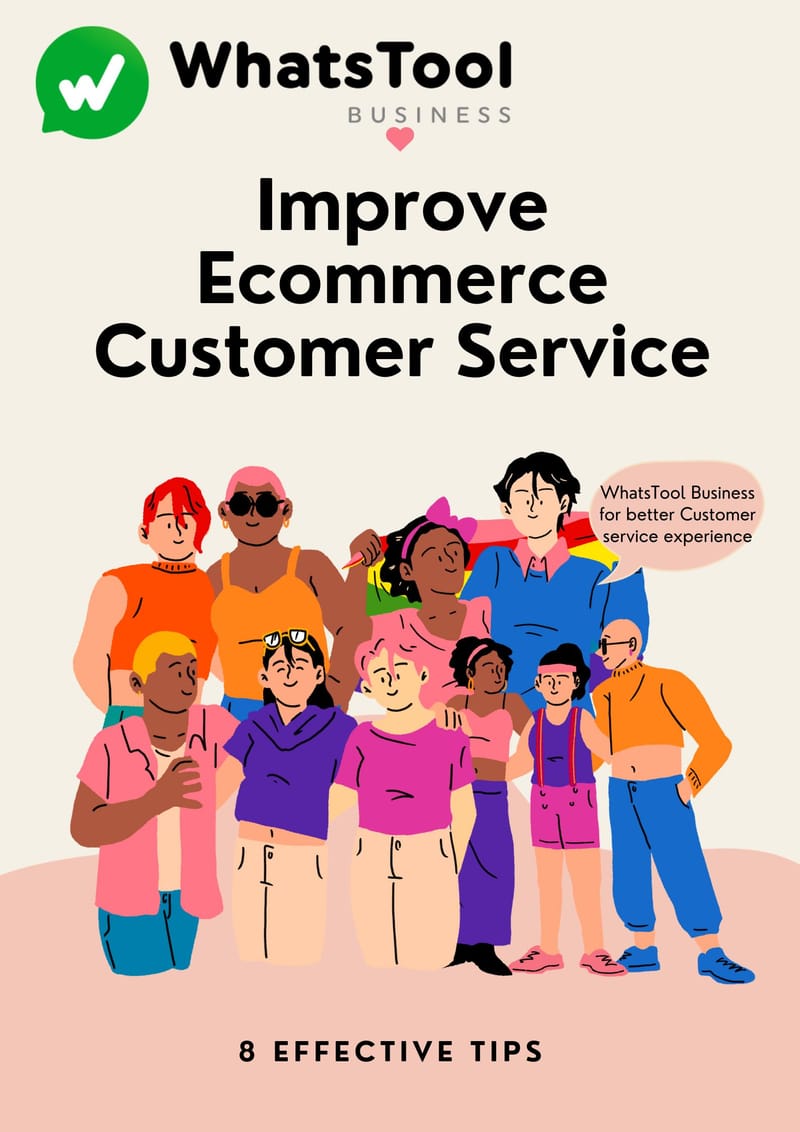
Customers form opinions about the customer service provided by a company based on their interactions and experiences. A company's customer service is often judged on factors such as responsiveness, communication skills, issue resolution, empathy, accessibility, knowledgeability, and the overall customer experience. Positive perceptions are influenced by prompt and effective problem-solving, clear and empathetic communication, and a sense of being valued. On the contrary, negative experiences, such as slow response times, unhelpful communication, or unresolved issues, can lead to dissatisfaction and may impact the customer's overall impression of the company. Ultimately, customers appreciate a customer service team that is proactive, knowledgeable, and committed to providing a seamless and positive experience throughout their interaction with the brand.
Relation between customer service and business growth

Customers' perceptions of a company's customer service significantly impact its growth trajectory. Positive customer service experiences build trust, enhance brand loyalty, and contribute to positive word-of-mouth recommendations. Satisfied customers are more likely to become repeat buyers and advocates for the brand, which can lead to increased customer retention and acquisition. On the other hand, negative customer service experiences can result in customer churn, damage the company's reputation, and lead to lost business opportunities. In today's interconnected world, where customer reviews and feedback spread rapidly through social media and online platforms, delivering exceptional customer service is not only a means of retaining existing customers but also a crucial element in attracting new ones. Companies that prioritize and consistently improve their customer service strategies are more likely to foster long-term customer relationships and, consequently, experience sustained growth in their market share and profitability.
Ways to improve eCommerce customer service
Customers are the lifeblood of a company, driving revenue and sustaining its existence. Meeting customer needs fosters loyalty, positive word-of-mouth, and long-term success
Here are 8 effective tips that can significantly improve your customer service experience:
- Live Chat
Live chat can significantly enhance customer service by providing real-time, convenient, and personalized support to users. It allows businesses to engage with customers instantly, addressing their queries or concerns promptly. The immediacy of live chat contributes to higher customer satisfaction as it eliminates the need for customers to wait for responses. Moreover, live chat enables personalized interactions, allowing businesses to tailor their responses to individual customer needs. The platform facilitates efficient issue resolution, providing a seamless communication channel that can lead to improved customer loyalty and positive brand perception. Additionally, live chat can be a valuable tool for proactive customer engagement, allowing businesses to anticipate and address potential problems before they escalate. Overall, integrating live chat into customer service strategies can create a more responsive, user-friendly, and customer-centric support experience, ultimately fostering stronger relationships between businesses and their customers. - Social Media
There are lots of users use social media to explore brand-related information and brands use it to write a brand story. And that’s the place where customer service is of utmost importance.
Social media can significantly enhance eCommerce customer service by providing a dynamic and direct channel for communication between businesses and customers. Platforms like Twitter, Facebook, and Instagram allow companies to address customer inquiries, concerns, and feedback in real-time, fostering quick and personalized interactions. Through social media, businesses can showcase products, promotions, and updates, keeping customers engaged and informed. Additionally, leveraging social listening tools enables companies to proactively identify and resolve issues, demonstrating a commitment to customer satisfaction. By actively participating in social media conversations, eCommerce businesses can build a stronger brand presence, cultivate customer loyalty, and gain valuable insights to continually improve their products and services. - Personalized experiences
Personalized service in eCommerce is a multifaceted approach that involves leveraging customer data to tailor every aspect of the shopping experience, addressing individual preferences and needs. By employing advanced analytics and machine learning algorithms, eCommerce platforms can analyze customer behavior, purchase history, and preferences to provide highly targeted product recommendations. These platforms can also send personalized and timely communication, such as email campaigns featuring exclusive offers or discounts on items likely to appeal to specific customers. Furthermore, website personalization through features like customized landing pages and dynamic content ensures that each user encounters a tailored interface. This level of personalization not only streamlines the shopping process but also creates a sense of individualized attention, fostering customer loyalty. In essence, personalized service in eCommerce goes beyond mere customization, aiming to anticipate and fulfill the unique desires of each customer, ultimately leading to a more satisfying and engaging online shopping experience. - Deploy an omnichannel strategy
Deploying an omnichannel strategy can significantly enhance the customer experience by providing a seamless and integrated journey across various touchpoints. An omnichannel approach ensures consistency and continuity in customer interactions, regardless of whether customers engage with the business through online platforms, mobile apps, social media, physical stores, or customer support channels. By breaking down silos between different channels, customers can transition effortlessly between them, enjoying a cohesive and personalized experience. For example, an omnichannel strategy enables customers to start their purchase online, continue it on a mobile device, and finalize it in a physical store, with their preferences and information seamlessly transferred. This level of integration not only increases convenience but also allows businesses to gather comprehensive data on customer behavior, enabling more personalized and targeted engagement. Ultimately, deploying an omnichannel strategy demonstrates a commitment to meeting customers wherever they are, fostering loyalty, and improving overall satisfaction by providing a unified and smooth experience across all touchpoints, - Be wary of your response time
Being wary of your response time is crucial in enhancing the customer service experience. Prompt and timely responses convey a sense of attentiveness and value to the customer. In an era where instant communication is the norm, delays can lead to frustration and dissatisfaction. Quick responses not only address customer inquiries or issues promptly but also contribute to a positive perception of your brand. This is particularly vital in eCommerce, where customers may have questions about products, orders, or general inquiries. Implementing efficient communication channels, automated responses, and setting clear expectations regarding response times can significantly improve the overall customer service experience, fostering trust and loyalty. Customers are more likely to feel supported and valued when they perceive a commitment to timely and responsive interactions, contributing to a positive and lasting impression of your eCommerce business. - Give priority to transparency
Prioritizing transparency in your business operations can significantly enhance the overall customer experience. When customers feel informed and have a clear understanding of your processes, policies, and products, it builds trust and credibility. Transparency helps set realistic expectations, reducing the likelihood of misunderstandings or dissatisfaction. In eCommerce, being transparent about product details, pricing, shipping times, and return policies creates a more positive and open relationship with customers. Providing clear and honest communication, especially in the event of issues or delays, shows accountability and a commitment to customer satisfaction. Transparent practices also contribute to brand loyalty, as customers appreciate businesses that are upfront and honest. By giving priority to transparency, you create a more open and trustworthy environment, ultimately improving the customer experience and fostering long-term relationships with your customers. - Track customer satisfaction score
Tracking customer satisfaction scores (CSAT) is a valuable practice that can significantly improve the overall customer experience. CSAT measurements allow businesses to gauge customer satisfaction levels through feedback on specific interactions, purchases, or overall experiences. By systematically monitoring these scores, companies can identify patterns, trends, and areas for improvement. Regularly assessing CSAT scores provides valuable insights into customer preferences and pain points, enabling businesses to make informed decisions about product offerings, service enhancements, or process optimizations. It also allows for the prompt identification and resolution of issues, demonstrating a commitment to customer-centricity. Additionally, tracking CSAT scores helps in benchmarking performance over time, setting goals for improvement, and aligning strategies with customer expectations. The insights derived from CSAT metrics empower businesses to proactively enhance their offerings and services, leading to an overall improved customer experience. - Video Tutorials
Video tutorials can significantly enhance the customer experience by providing visually engaging and accessible content that effectively communicates product features, usage instructions, and troubleshooting tips. They offer a dynamic way for users to grasp information, catering to different learning preferences and ensuring clarity in comprehension. Video tutorials empower customers to self-educate at their own pace, reducing reliance on customer support for basic queries and facilitating quicker issue resolution. The convenience, versatility, and shareability of video content contribute to an improved onboarding process, aiding new users in getting started swiftly. Ultimately, by leveraging video tutorials, businesses can elevate customer satisfaction, foster efficient self-service, and establish a positive and memorable brand association.
How WhatsTool Business can be your OneStop shop for better customer service?
WhatsApp Integration: WhatsTool Business allows businesses to integrate WhatsApp into their customer support strategy, enabling real-time communication and leveraging the popularity and convenience of the WhatsApp platform.
Automated Messaging: Automation features can be used to send automated responses, greetings, or frequently asked questions, providing quick information to customers and reducing response times.
Multi-Agent Collaboration: Allow multiple agents to collaborate on handling customer queries efficiently, ensuring that no customer inquiry goes unanswered.
Message Templates: Businesses can use message templates for common interactions, ensuring consistency and saving time for both agents and customers.
Rich Media Support: Sending of rich media, including images, videos, and documents, enhancing the communication experience and providing more comprehensive support.
Customer Data Management: Efficiently manage and organize customer data, allowing agents to have a complete view of customer interactions and preferences, leading to more personalized support.
Analytics and Reporting: WhatsTool Business provide analytics and reporting tools to track key performance metrics, helping businesses understand customer behavior, identify trends, and continuously improve their support processes.


